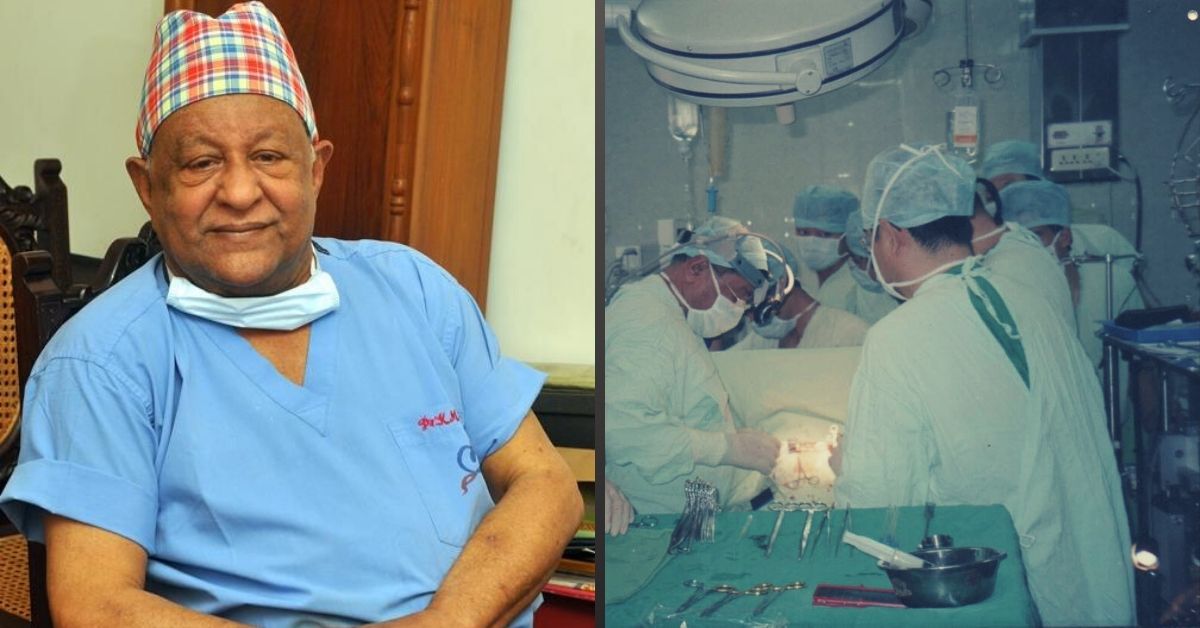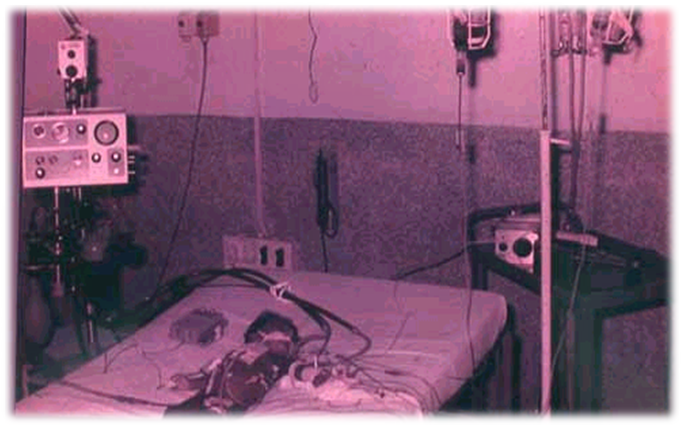Awarded Padma Shri, This Pioneering Heart Surgeon Has Performed 40,000+ Surgeries
Eager to contribute to cardiac care in India, Dr Cherian took the hard call to refuse lucrative job offers at the University of Cincinnati and the Lahey Clinic in the US, as well as permanent residency in the US and Australia to return to India on 6 June 1975.

Health Heroes – This article is part of a series to celebrate some of India’s most amazing doctors and to understand the incredible work they are doing.
If you live to be 80 years old, your heart would have beaten more than three billion times! But today’s lifestyle is challenging the functioning of this hardworking organ, pushing us to the edge.
In a one-on-one interview, Dr Kotturathu Mammen “KM” Cherian, discusses everything about the heart.
Born in 1942, K M Cherian became a pioneering heart surgeon performing more than 46,000 surgeries till date. Coming from a family of farmers, he graduated from Kasturba Medical College, Manipal before going to Australia for his FRACS.
Eager to contribute to cardiac care in India, Dr Cherian took the hard call to refuse lucrative job offers at the University of Cincinnati and the Lahey Clinic in the US, as well as permanent residency in the US and Australia to return to India on 6 June 1975.
At the time, only three cities—Delhi, Mumbai and Vellore—were equipped with performing open-heart surgery, albeit in a primitive manner. Sadly, lacking an opening in these cities, Dr Cherian took up a job in the Southern Railways, in the lowest cadre, for a monthly salary of Rs 1,071.
“On the seventh day after returning to India, I operated on Mr Kaja Moideen, a 42-year old draftsman from Integral Coach Factory in the Railways. In three days, I came to know that I had just performed the first successful bypass surgery in India,” Dr Cherian recalls.
He continues, “On 26 June the same year, an emergency was declared in the country, slashing all prospects for me to get a higher job, as direct recruitment to UPSC was disbanded. But I decided to stay, for I would not have had this opportunity anywhere else in the world, but in India.”
For the next 13 years, Dr Cherian continued to serve the Railways before taking a voluntary retirement in 1987 to start Madras Medical Mission, the first super specialty cardiac hospital of its kind.
After that came a long list of firsts in India—the first internal mammary artery graft, the first correction of cardiac defects in children, the first heart transplant after legislation on brain death, the first paediatric heart transplant, the first heart and lung transplant, and the first bypass surgery on a woman.
Looking back, Dr Cherian shares, “at the time, the technology was very obsolete, and we did not have any modern gadgets such as a cath lab, an echo machine, a headlight (cold light), or modern suture material like prolene. To harvest the internal mammary artery, we did not even have proper cautery. Today, we have the harmonic scalpel.”

Since then, over the last four decades, the incidence of heart disease has increased four times!
“We see it more in younger people,” says Dr Cherian. “This shocking trend is mainly due to unhealthy habits such as lack of exercise, junk food and changes in lifestyle, but also due to conditions like hypertension and diabetes.”
As the heart pumps tirelessly every second, it delivers blood with oxygen and nutrients to the farthest parts of the body through blood vessels called arteries. Over time, “factors like age and hypertension change the stiffness and elasticity of these arteries, leading to a condition known as arteriosclerosis,” Dr Cherian explains.
Arteriosclerosis mainly affects peripheral arteries such as those of the legs, kidneys, and the cornea. On the other hand, deposits of bad lipids like cholesterol, that mainly occur in bigger blood vessels such as the aorta, the carotid and the coronary arteries lead to atherosclerosis.
Both arteriosclerosis and atherosclerosis disrupt blood flow in the body, leading to life-threatening conditions like heart attack and stroke.
Bypass surgery, a term now common in households in India and abroad, is a procedure required for patients with atherosclerosis. “Bypass surgery is like when you are travelling on a straight road where there has been a landslide, or a slipped rock in the path, and you need to take a diversion. When there is a block in the coronary artery, you bypass it,” Dr Cherian explains.
Previously, this surgery was done using a vein taken from the leg, but now, arterial graft taken from the chest wall or the forearm are preferred.”
The other heart surgery we routinely hear is “putting a stent”. Dr Cherian explains that this is similar to “resurfacing and tarring the road.” He adds, “Unlike bypass surgery, the original roads (arteries) stay the same when a stent is put, but the pathway is restored, so that the traffic (blood flow) can continue normally.”
In 1984, Dr Cherian was the first to perform bilaterial internal mammary artery graft in India. He was awarded the Padma Shri in 1991 for his pioneering work and continued service.
Also Read: ‘The Ticking Time Bomb’: A Doctor on Whether TB Can Be Eliminated From India
Thanks to able doctors like him, millions of hearts continue to beat. But nothing is better than preventing heart disease in the first place. “Foods high in fibre, low in cholesterol, low in sugar, and low in salt are the secret to a healthy heart. Plenty of these foods, fruits, and vegetables, along with an active lifestyle with daily exercise, will go a long way in ensuring a healthy heart. Avoiding risk factors like smoking, alcohol and stress is also part of the mantra,” Dr Cherian concludes.
(Edited by Shruti Singhal)
Like this story? Or have something to share?
Write to us: [email protected]
Connect with us on Facebook and Twitter.
If you found our stories insightful, informative, or even just enjoyable, we invite you to consider making a voluntary payment to support the work we do at The Better India. Your contribution helps us continue producing quality content that educates, inspires, and drives positive change.
Choose one of the payment options below for your contribution-
By paying for the stories you value, you directly contribute to sustaining our efforts focused on making a difference in the world. Together, let’s ensure that impactful stories continue to be told and shared, enriching lives and communities alike.
Thank you for your support. Here are some frequently asked questions you might find helpful to know why you are contributing?


This story made me
-
97
-
121
-
89
-
167













